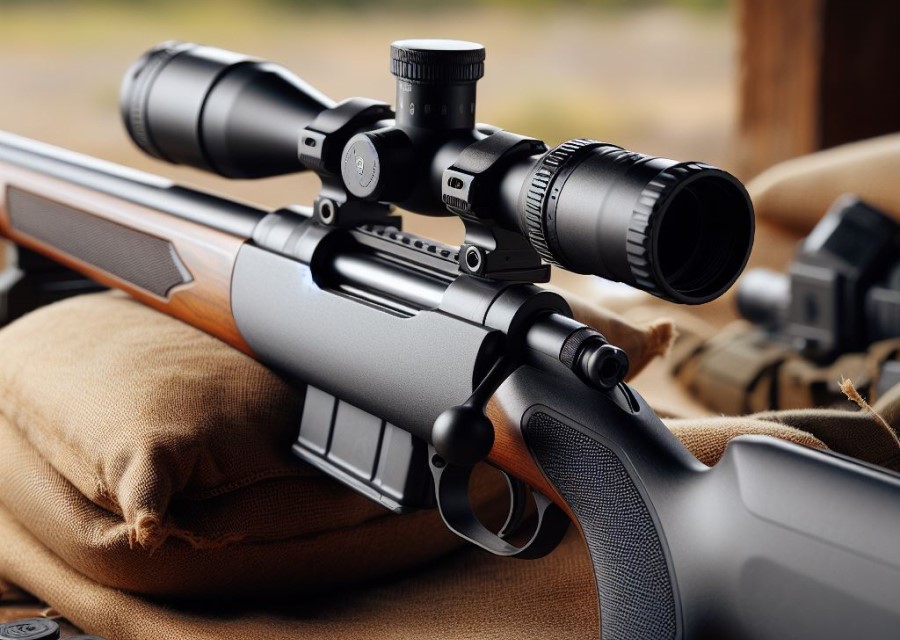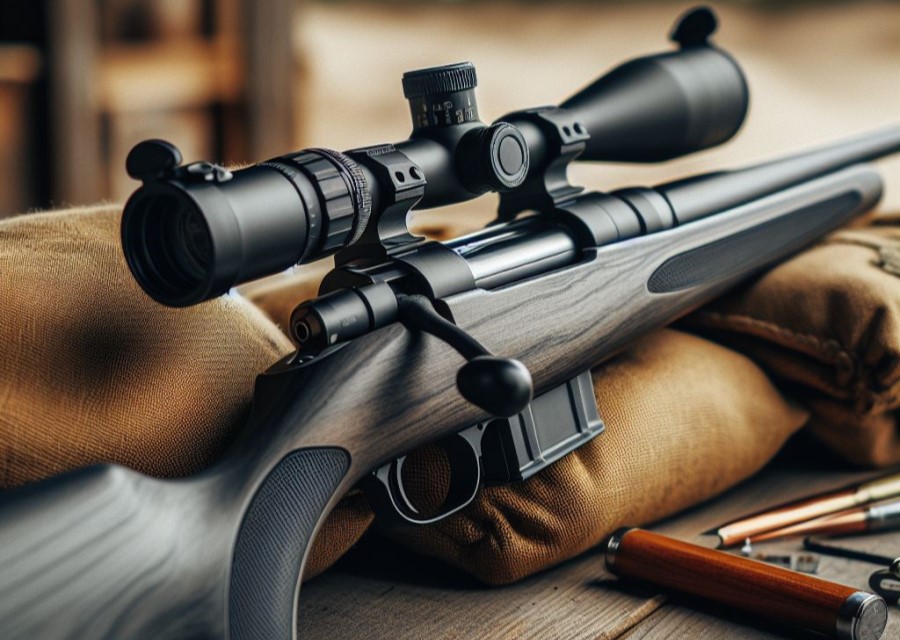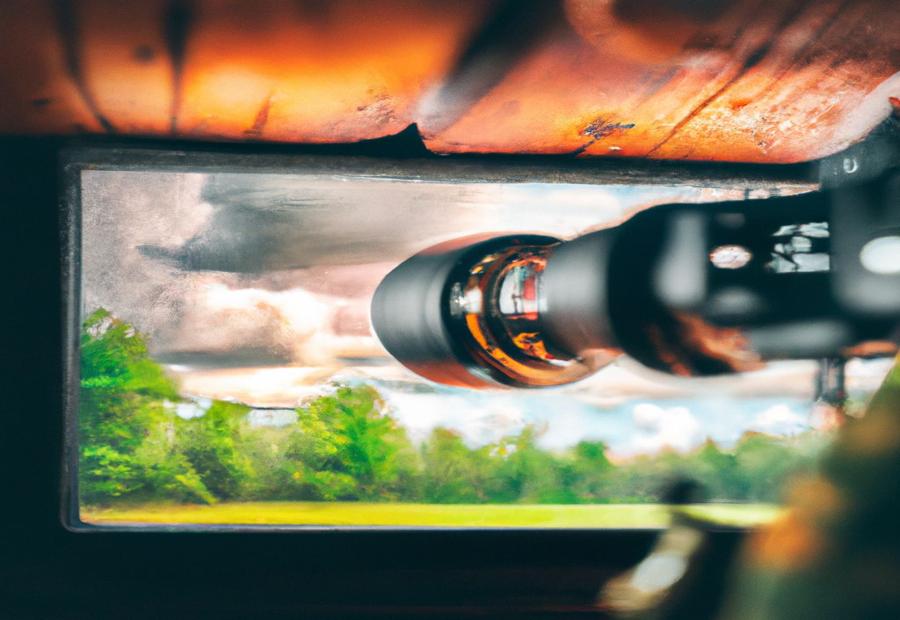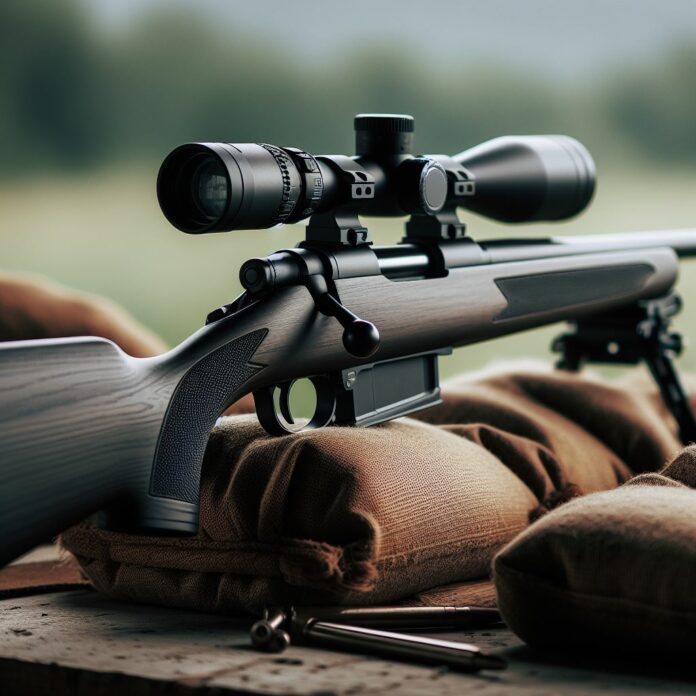The .243 rifle is a popular choice among hunters and sports shooters for its versatility and accuracy. When it comes to maximizing the potential of a .243 rifle, choosing the right scope is crucial. A well-suited scope can greatly enhance your shooting experience and accuracy.
To select the best scope for a .243 rifle, several factors need to be considered. These factors include factors such as magnification power, objective lens size, reticle type, durability, adjustment options, eye relief, and budget. It’s important to find a balance between these factors to ensure optimal performance.
There are specific scope models that are highly recommended for use with a .243 rifle, each offering different features and benefits.
Lastly, proper research, considering shooting environment and purpose, and correctly mounting and zeroing the scope are essential steps to getting the most out of your scope.
By following these tips and guidelines, you can make an informed decision and set up your .243 rifle scope for ultimate precision and success.
Factors to Consider for Choosing the Best Scope for a .243 Rifle

Considering the factors to choose the best scope for a .243 rifle, let’s delve into the essentials. From magnification power and objective lens size to reticle type and durability, we’ll explore the key elements that affect your shooting experience.
We’ll also discuss adjustment and zeroing options, eye relief and comfort, and how your budget comes into play. So, whether you’re a seasoned shooter or a novice looking for the perfect scope, this section has got you covered.
1. Magnification Power
To choose the best scope for a .243 rifle, one important factor to consider is the magnification power. The magnification power of a scope determines how close or far the target will appear. It is crucial to select a scope with the appropriate magnification range for your shooting needs.
3-9x: Provides versatility for various shooting distances and hunting situations.
4-12x: Offers a slightly higher magnification range for more precise shots at longer distances.
6-24x: Delivers high magnification for long-range shooting and precision target practice.
Fixed Power (e.g., 10x): Provides a single magnification level, ideal for specific shooting applications like benchrest shooting or competition.
When choosing the magnification power for your .243 rifle scope, consider factors such as the shooting distance, target size, and shooting environment. A higher magnification power is suitable for long-range shooting, while a lower range may be more practical for hunting in dense woods or short-range targets.
Pro Tip: Remember, higher magnification power does not always mean better. It is essential to strike a balance between magnification and field of view to ensure a clear and comfortable shooting experience.
2. Objective Lens Size
The objective lens size, which refers to the diameter of the front lens of the scope, plays a crucial role in determining the light-gathering capability of the scope, thus affecting the clarity and brightness of the image.
When it comes to objective lens size, a larger size allows more light to enter the scope, resulting in a brighter image, especially in low-light conditions. However, it’s important to note that a larger objective lens size also increases the weight and size of the scope.
Choosing the right objective lens size should be based on your specific shooting needs and conditions. If you engage in long-range shooting or hunting in low-light environments, opting for a larger objective lens size, such as 50mm or above, can be beneficial as it maximizes light transmission.
On the other hand, if portability and ease of handling are your priorities, a smaller objective lens size, like 40mm or below, may be more suitable.
It’s important to keep in mind that larger objective lens sizes may require higher mounting positions or special rings to ensure proper clearance with the rifle barrel.
In the end, the objective lens size you choose should be based on your shooting preferences and the specific conditions in which you will use the scope.
3. Reticle Type
The choice of reticle type is an important consideration when selecting a scope for a .243 rifle. There are various types of reticles available, each with its own advantages and uses.
Mil-Dot Reticle: This Reticle Type utilizes dots spaced at even intervals to assist with range estimation and bullet drop compensation. It is highly favored among long-range shooters and provides precise aiming points.
BDC (Bullet Drop Compensator) Reticle: This Reticle Type is specifically designed to compensate for bullet drop at different distances. It typically features markers or hash marks that correspond to specific ranges, making holdover adjustments quick and easy.
Duplex Reticle: Among the most common Reticle Types, the duplex reticle showcases thick outer lines that taper towards a thinner crosshair at the center. It offers a clear and uncluttered view while providing a precise aiming point.
Mildot Gen 2 Reticle: This Reticle Type combines the features of a mil-dot reticle with finer sub tensions and additional aiming points. It is particularly useful for range estimation, holdovers, and windage compensation.
MOA (Minute of Angle) Reticle: The MOA Reticle uses hash marks or dots spaced at one minute of angle increments. It allows for precise adjustments for windage and elevation, making it a popular choice for long-range shooting.
Remember, the selection of the reticle type depends on your shooting preferences and the intended use of your .243 rifle. Factors such as shooting distance, target type, and shooting conditions should be considered when deciding on a reticle type.
Pro Tip: It is recommended to test different reticle types and determine which one best suits your shooting style and needs.
4. Durability and Weather Resistance
Durability and weather resistance are crucial factors to consider when choosing a scope for your .243 rifle. Ensuring that the scope can withstand harsh conditions and rough handling is essential for its longevity and reliability in varying weather conditions.
Here are some features to look for in a scope that offers durability and weather resistance:
- Waterproof: Look for a scope that is fully waterproof to protect it from damage caused by rain or submersion in water. This ensures the internal components remain protected and functional.
- Fogproof: Opt for a scope with nitrogen or argon purging, which prevents internal fogging. This feature is essential for maintaining clear visibility in humid or rapidly changing temperature conditions.
- Shockproof: Choose a scope that is built to withstand recoil and impact. Look for scopes with durable construction, shock-absorbing materials, and reinforced components to ensure it can handle the recoil of your .243 rifle without compromising accuracy.
- Durable materials: Consider scopes with durable materials such as aircraft-grade aluminum or polymer construction, which offer lightweight yet rugged durability.
- Scratch-resistant coatings: Look for scopes with scratch-resistant lens coatings to protect against minor abrasions and ensure clear visibility throughout the lifespan of the scope.
Considering these factors will help you select a scope that can withstand the rigors of outdoor shooting and provide reliable performance in various weather conditions.
The development of durable and weather-resistant scopes is a result of advancements in materials and manufacturing techniques.
In the past, scopes were vulnerable to water damage and internal fogging, negatively impacting their functionality in harsh weather conditions.
However, with the use of waterproof and fogproof technologies, along with the introduction of robust materials and coatings, scopes now offer enhanced durability and weather resistance.
Modern scopes are designed to withstand extreme temperatures, moisture, and physical impacts while maintaining their performance and clarity.
These advancements have greatly improved the shooting experience for enthusiasts and enabled them to confidently use their .243 rifles in any weather conditions.
5. Adjustment and Zeroing Options
It is crucial to remember that adjustment and zeroing options play a significant role in achieving accurate shooting and can greatly enhance your overall shooting experience.
Therefore, when selecting a scope for your .243 rifle, ensure that it offers these essential features. Follow the steps provided to properly adjust and zero your scope:
- Securely mount the scope on your rifle using suitable rings or mounts, ensuring proper alignment with the bore.
- Achieve the correct eye relief by adjusting the scope’s position on the rifle until you have a clear and comfortable view through it.
- Utilize the windage and elevation knobs on the scope to bring the reticle to the center of the target. Use the indicated movements on the scope’s adjustment dials to precisely fine-tune its position.
- Fire a series of shots at a target and carefully observe the impact points. If the shots are not hitting the desired point, make necessary adjustments to the windage and elevation knobs.
- Continue shooting and adjusting until your shots consistently hit the intended point of impact. Be prepared for multiple rounds of adjustments and shots during this process.
6. Eye Relief and Comfort
When selecting a scope for your .243 rifle, it is crucial to take into account the eye relief and comfort it provides. Here are some key factors to bear in mind:
- Eye Relief: Ensure that the scope has sufficient eye relief, which refers to the distance between your eye and the scope’s eyepiece. This is important to prevent any potential recoil from causing discomfort or injury.
- Comfort: Consider the overall comfort when using the scope. Look for features like ergonomic design, adjustable eye cups, and a comfortable grip.
To ensure optimal eye relief and comfort, here are a few recommendations:
- Select a scope with a minimum eye relief of 3.5 inches to maintain a safe distance from the scope and avoid any potential injuries.
- Choose scopes with adjustable eye cups to accommodate individual preferences and ensure a proper fit for your eye.
- Take into account scopes with shock-absorbing technology or recoil reduction features for added shooting comfort.
Keep in mind that the right scope with appropriate eye relief and comfort can significantly enhance your shooting experience with a .243 rifle.
Top Scopes Recommended for a .243 Rifle

Discover the ultimate guide to the top scopes recommended for your trusty .243 rifle.
Get ready to take your shooting accuracy to new heights with these highly recommended options.
From the impressive Burris Fullfield II 3-9×40 to the cutting-edge Scope Model 3, each sub-section will reveal the features, benefits, and performance of these top-notch scopes.
So, whether you’re a seasoned marksman or a hunting enthusiast, this section is a must-read to elevate your shooting experience.
1. Burris Fullfield II 3-9×40
Below is a table providing information about Scope Model 1 for a .243 rifle:
The Burris Fullfield II 3-9×40 for a .243 rifle offers a magnification power range of 4-12x, allowing for versatile shooting distances. It features a 40mm objective lens size, providing clear and bright visuals.
The Burris Fullfield II 3-9×40 utilizes an MOA reticle type, allowing for precise aiming and adjustments.
In terms of durability and weather resistance, the Burris Fullfield II 3-9×40 is built to withstand harsh conditions, as it is both waterproof and shockproof.
2. Vortex Optics Diamondback 4-12×40
Factors to Consider for Vortex Optics Diamondback 4-12×40:
1. Magnification Power: 10x – 20x
2. Objective Lens Size: 50mm
3. Reticle Type: MOA Reticle
4. Durability and Weather Resistance: Waterproof and Fog-proof
5. Adjustment and Zeroing Options: 1/4 MOA Adjustments
6. Eye Relief and Comfort: 3.5 inches
3. Weaver Kaspa 3-9X40
Weaver Kaspa 3-9X40 is an excellent choice for a .243 rifle.
The Weaver Kaspa 3-9X40 offers a versatile 10-30x magnification range, allowing for precise targeting at various distances. It also features a 50mm objective lens, ensuring bright and clear images even in low light conditions.
The MOA reticle provides easy and accurate adjustments for windage and elevation. Additionally, this scope is shockproof and waterproof, ensuring durability and reliability in the field.
The BDC reticle allows for bullet drop compensation, enhancing accuracy over varying distances. The fogproof and shockproof design ensures optimal performance in different weather conditions.
Tips for Choosing and Setting Up Your Scope

Photo Credits: Paintballbuzz.Com by Gerald Taylor
When it comes to finding the best scope for your .243 rifle, it’s crucial to make informed choices and get your setup just right. In this section, we’ll uncover some valuable tips that can help you navigate through the process like a pro.
From delving into research and reading reviews to considering your shooting environment and purpose, we’ve got you covered. Plus, we’ll explore mounting and zeroing the scope, and effective techniques for practice and fine-tuning.
Get ready to enhance your shooting precision and elevate your rifle game to the next level!
1. Research and Read Reviews
When looking to purchase a scope for your .243 rifle, it’s crucial to research and read reviews to ensure you make an educated decision. Here are a few reasons why:
- Comparative analysis: Conducting research and reading reviews allows you to compare different scope models and their features, including magnification power, objective lens size, reticle type, durability, and adjustment options.
- User experiences: By going through reviews, you can gain insights into the experiences of other shooters who have used the scopes you are considering. This can help you understand the strengths and weaknesses of each model.
- Performance evaluation: Reviews often provide information about how a scope performs under various shooting conditions. This helps you assess whether a particular scope is suitable for your shooting environment and purpose.
- Reliability and quality: Through research, you can identify which scopes have a reputation for being reliable and durable. Reviews can also give you an indication of the overall quality of the scopes you are interested in.
Pro-tip: While reading reviews, pay attention to the credibility of the sources and look for reviews from experienced shooters who have similar needs and preferences as yours.
2. Consider Your Shooting Environment and Purpose
When considering the best scope for a .243 rifle, it’s important to consider your shooting environment and purpose. Here are factors to take into account:
- Distance: Determine the average distance at which you will be shooting. This will help you choose a scope with the appropriate magnification power.
- Lighting conditions: Consider the lighting conditions in which you will be shooting. If you frequently shoot in low light situations, choose a scope with a larger objective lens size to gather more light.
- Target type: Think about the type of targets you will be shooting. If you are primarily shooting stationary targets, a simpler reticle type may be sufficient. However, if you plan on engaging moving targets, a scope with a more advanced reticle may be beneficial.
- Durability: If you will be shooting in harsh weather conditions or rugged terrains, opt for a scope that offers durability and weather resistance.
- Adjustment options: Consider the adjustment and zeroing options offered by the scope. Look for easy-to-use adjustment knobs and a reliable zeroing system.
- Eye relief: The comfort of the scope is essential for extended shooting sessions. Ensure that the scope provides sufficient eye relief for your shooting style.
- Budget: Lastly, consider your budget. Set a reasonable budget and choose a scope that offers the best value for money within that range.
3. Mounting and Zeroing the Scope
To mount and zero your scope for a .243 rifle, follow these steps:
- Choose a suitable scope mount: Ensure that the scope mount is compatible with your rifle’s rail system. Consider factors such as height, material, and stability when selecting a mount.
- Mount the scope: Attach the rings of the scope mount to the rail system of your rifle. Make sure the rings are securely tightened to prevent any movement or shifting of the scope.
- Level the scope: Use a bubble level to ensure that the scope is properly aligned with the rifle. This will help in achieving accurate shots.
- Adjust eye relief: Position the scope at a comfortable distance from your eye, known as eye relief, to avoid any scope-related injuries. Adjust the scope’s position within the rings accordingly.
- Bore sight the scope: Use a bore sighting tool or align your rifle’s barrel with a distant target. Adjust the windage and elevation knobs to align the reticle with the target.
- Head to the shooting range: Take your rifle to a shooting range to fine-tune the zero of your scope. Fire a few rounds and make adjustments to the knobs based on the impact points on the target.
- Confirm zero: After making adjustments, continue shooting and making necessary tweaks until you achieve your desired zero. Ensure that the scope holds its zero during multiple shots.
By following these steps, you can properly mount and zero your scope for optimal accuracy and shooting performance with your .243 rifle.
4. Practice and Fine-tuning
- Start by adjusting your scope’s eyepiece to achieve a clear and sharp image.
- Ensure the scope is securely mounted to your rifle using the appropriate rings or mounts.
- Before heading to the range, familiarize yourself with the adjustment knobs on the scope. Understand which knob controls the windage (horizontal) and elevation (vertical) adjustments.
- Once at the range, start by zeroing your scope. Begin at a closer distance, such as 25 or 50 yards, to ensure you’re hitting the target.
- Make small, incremental adjustments to the windage and elevation knobs as needed to center your shots on the target.
- Continue shooting groups and adjusting until you consistently hit your desired point of impact.
- Next, move to a longer distance, such as 100 yards or your desired shooting range, and repeat the zeroing process. Again, make slight adjustments to fine-tune your scope’s settings.
- Practice shooting from various shooting positions, such as prone, kneeling, or standing, to ensure your scope remains accurate in different scenarios.
- Regularly check and maintain your scope, ensuring it stays clean, free from debris, and properly adjusted.
- Practice and fine-tuning are essential for improving your shooting skills and the performance of your scope.
Frequently Asked Questions
What is the best scope for a .243 rifle?
The best scope for a .243 rifle depends on various factors such as shooting range and target size. However, some highly recommended scopes for .243 rifles include the Vortex Optics Diamondback 4-12×40, Burris Fullfield II Ballistic Plex Scope, Sightron 3-9x40mm SIH-Tac Duplex Series Riflescope, and Bushnell Banner Dusk & Dawn 3-9x40mm. These scopes offer different features like BDC reticles, parallax correction, multi-coated lenses, and fast-focus eyepieces.
What magnification level is required for long-range shots with a .243 rifle?
For long-range shots (350 yards and above) with a .243 rifle, scopes with 9x and up magnification and 40mm lenses are recommended.
What magnification level is required for medium-range shots with a .243 rifle?
For medium-range shots (150-350 yards) with a .243 rifle, scopes with 5x-9x magnification are recommended.
What magnification level is required for close-range shots with a .243 rifle?
For close-range shots (under 150 yards) with a .243 rifle, scopes with 1x-4x magnification are suitable.
Which is the top pick among the recommended scopes for .243 rifles?
The Vortex Optics Diamondback 4-12×40 is considered the top pick among the recommended scopes for .243 rifles. It is known for its lightweight body, crystal-clear view, and durability.
What is the best budget-friendly scope for a .243 rifle?
For those on a budget, the Burris Fullfield II 3-9×40, Bushnell Banner 3-9×40, Redfield Revolution 4-12×40, Weaver Kaspa 3-9X40, and Vortex Crossfire II 3-9X40 are recommended as budget scopes for .243 rifles. These scopes are affordable, widely available, and have great manufacturers behind them.
What are the features to consider when choosing a scope for a .243 rifle?
When choosing a scope for a .243 rifle, factors such as magnification range, reticle style, turret type, and sight picture should be considered. A suitable magnification range for hunting is between 2x and 3.5x for short-range hunting, 9x for medium-range hunting, and at least 14x for long-range hunting.
Different reticle styles like crosshair, duplex, BDC, and mil-dot have their own pros and cons. Capped turrets are popular for hunting scopes, while target turrets are better for long-range shooting. A good sight picture can be achieved through high-quality glass, fully multicoated lenses, and good light transmission.

